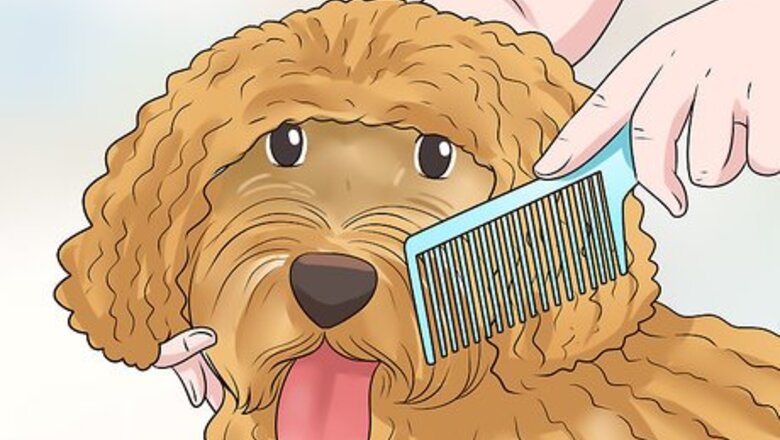
views
Grooming and Trimming Facial Hair
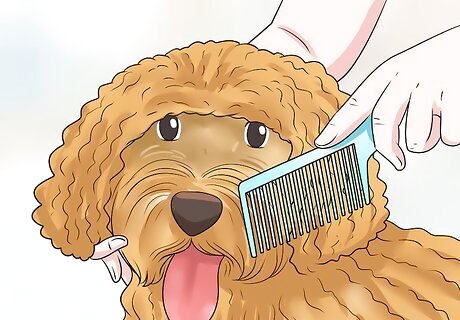
Brush your dog and remove mats from its hair. Use a fine-tooth comb or a flea comb. Then, comb your dog’s face one small section at a time. Focus on each cheek. Then, brush the area above the eyes. Finally, focus on the dog’s neck area and under its mouth. When you see a matted area, gently lift the fur up, slide your brush into it, and at a slight angle pull the brush (and mat) away from the dog’s body. Your dog probably won’t be happy when you try to remove mats. To calm it, hold it and comfort it by saying “good dog.”
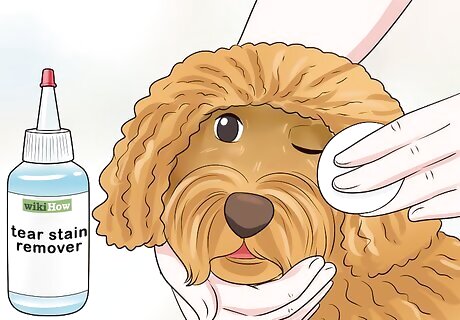
Apply tear stain remover wipes or other products around your dog’s eyes. If your dog has light or moderate stains around its eyes, use wipes to clean the area. If your dog has heavy stains, use tear stain remover powders or other products. Read the directions on specific products before using them.
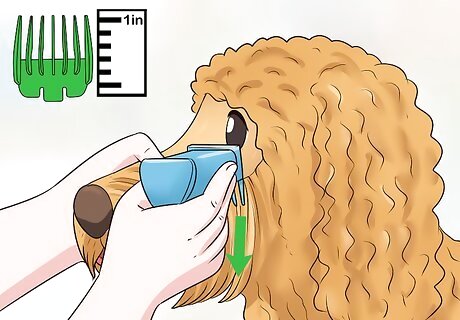
Use a clipper with a 1-inch (2.5 cm) attachment to trim your dog’s cheeks. Use one hand to hold and comfort your dog. Use your other hand to hold the clipper. Make two swipes down each cheek with the clipper. Do this slowly. Be gentle, as your dog will probably be nervous.
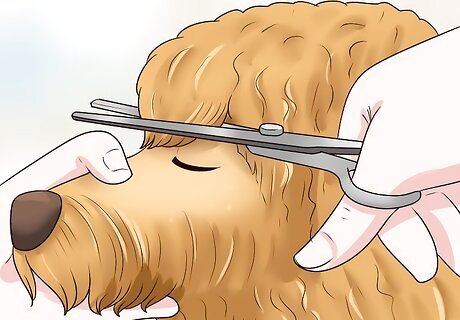
Create bangs above your dog’s eyes if you prefer. Use your scissors and trim the hair above your dog’s eyes. When you’re done, the dog should have bangs that are no more than 1-inch long (2.5 cm). Don't trim your dog's whiskers. Use safety scissors if you’re nervous about cutting around your dog’s eyes. If you want, you can cut the hair shorter, so that there are no noticeable bangs. However, many Goldendoodle owners prefer bangs.
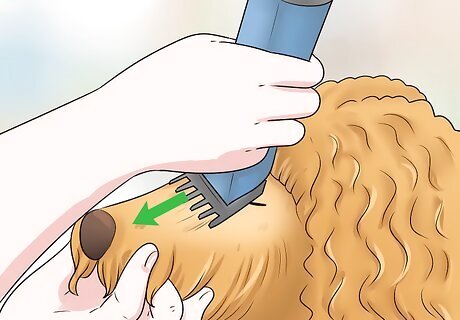
Blend the hair around the dog's eyes into the surrounding hair. Use scissors or a trimmer to trim the area around the dog’s eyes. Avoid cutting this hair too short. Your goal is to make the hair around your dog’s eyes blend into the hair on the top of its head and around its face.
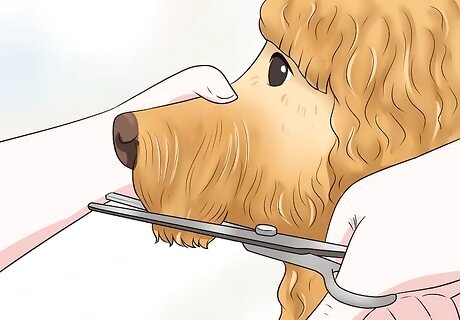
Trim the area around your dog’s mouth with scissors. Cut the hair so it’s not more than a quarter of an inch in length (.6 cm). If the hair around your dog’s mouth is too long, it'll clash with the overall teddy bear look of your dog's cut.
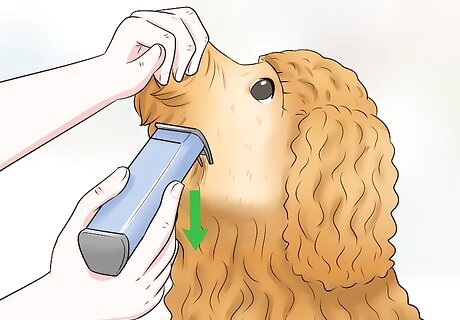
Cut underneath your dog's mouth with a clipper. Gently tilt the dog's face upward. Then, using your clipper and a 1-inch (2.5 cm) attachment, shave the area under the dog’s mouth and above its neck. As you move down toward its neck, switch to 1.5-inch (3.75 cm) attachment. Create a seamless transition from the mouth to the neck. Depending on your dog's hair, you may need to use scissors to create a transition zone between the areas you trimmed with the different attachments.
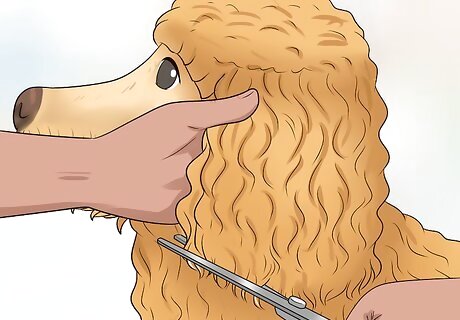
Trim the hair around your dog’s ears. Use scissors to trim the hair around your dog’s ears just a little bit. When doing this, cut along the curve of the ear itself. Ultimately, the hair around your dog’s ears should seem as if it hasn’t been cut at all. Focus on patches of fur that are longer than the rest of your dog's ear hair.
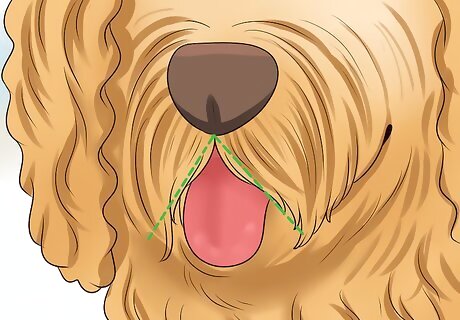
Avoid cutting your dog’s face hair too short. A mature Goldendoodle should have a “beard” that looks like an upside-down V on its face. The wide part of the V should end on both sides of the dog’s mouth/nose area. Typically, this hair is about a quarter of an inch (.635 cm) long or even slightly longer. If you cut your dog's hair too short, it won't have the upside-down V.
Maintaining Your Goldendoodle’s Face
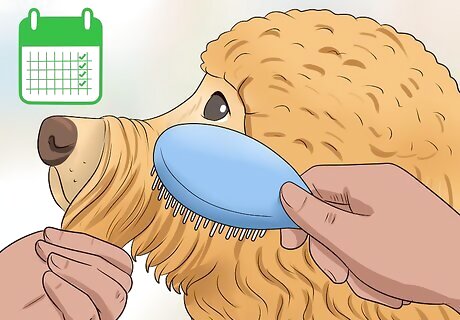
Brush your Goldendoodle’s facial hair at least once a week. Pick a day every week when you’ll brush your dog’s hair. When doing this, brush in the direction that the hair is already pointed. If your dog has hair mats, brush under the mat and then outward. Ultimately, by brushing your dog’s hair regularly, you’ll help maintain your grooming job.
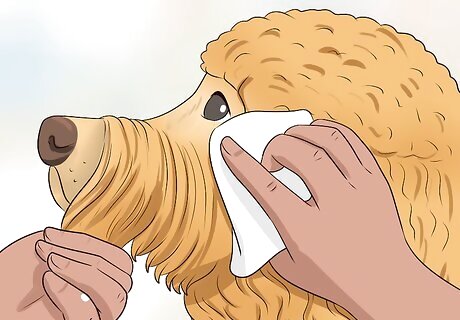
Wipe your dog’s face down as needed. Use a wet cloth, dog-safe wipes, or similar products to wipe your dog’s face when it gets dirty. Pay the most attention to the area around the eyes and mouth. Some dogs may need to be wiped every 3 or 4 days.
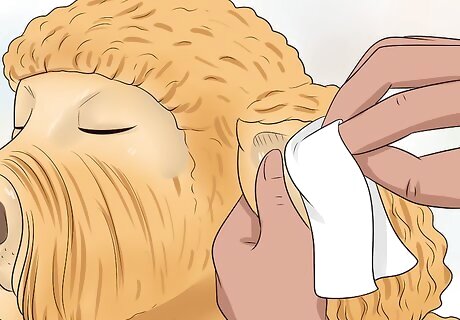
Check your dog's ears daily. Remove any debris, such as twigs, leaves, bugs, or grass awns, which could go lower in the dog's ear canal. Be gentle while handling the dog's ears, and avoid putting anything inside them. Don't dig in the dog's ear. If you have trouble removing a piece of debris, take the dog to the vet's office.
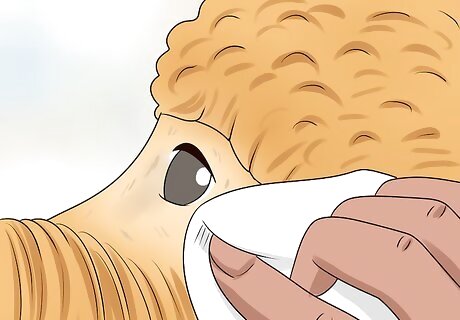
Limit allergen exposure to prevent tear stains around the eyes. The best way to avoid tear stains is to wipe away excess tears as soon as they appear. Reducing allergens can also help, as they can cause tear stains. There are many ways to reduce allergens in your dog's environment: Use a HEPA filter in your HVAC system. Clean and vacuum your house regularly.
Washing Its Face while Bathing
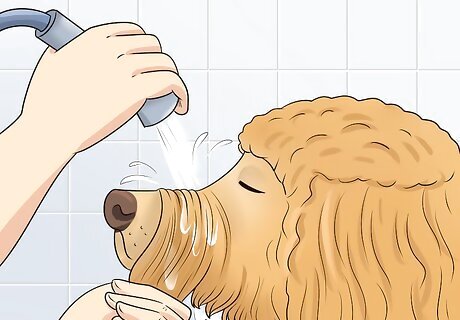
Wet your dog with a sprayer or a cup. After putting your dog in a bathtub or another bathing area, wet your dog's fur. Do this by lightly spraying it down or by pouring water over its head with a cup. Use enough water so that your dog’s hair is completely wet. When doing this, hold the dog with one hand and comfort it. Use water that is between 90 and 95 degrees Fahrenheit (32 and 35 degrees Celsius).
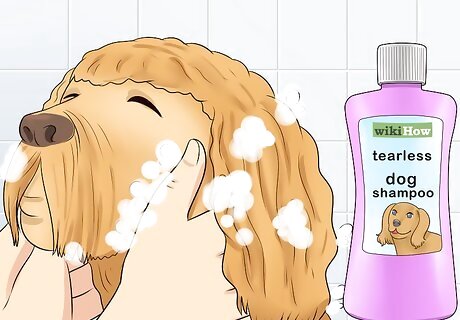
Shampoo your dog with a mild dog shampoo. Squirt some shampoo into your hand and rub it into your dog's fur. Pay particular attention to the area under your dog's eyes and around its mouth. While you should be gentle, make sure that the shampoo gets down to your dog's skin. When shampooing your dog’s face, try to use a tearless or “puppy” shampoo.
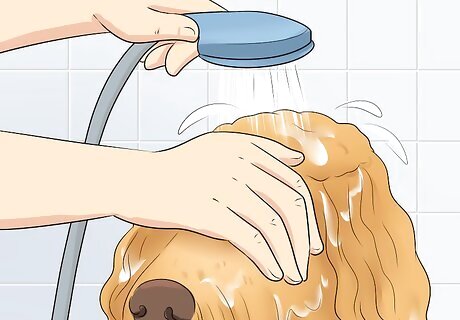
Rinse your dog thoroughly. Once you’ve massaged shampoo into your dog’s fur, begin the process of rinsing it off. Again, do this by either gently spraying your dog with a sprayer or by using a cup to pour water over your dog. When doing this, try to shield your dog's eyes with your hand. Rinse your dog until there is no shampoo or suds left in its fur.
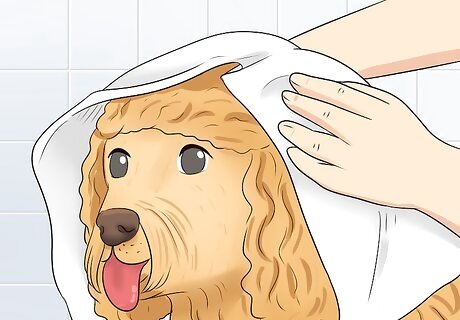
Pat your dog's head down with a towel. While you may be tempted to rub your dog with your towel to dry it faster, this may cause more mats and tangles in its hair. Instead, fold the towel into a square and gently pat your dog on its head, face, and neck. If you’re planning on grooming your dog’s face the same day, spend a little more time patting it down. After you pat your dog down, allow your dog to air dry for a couple of hours.













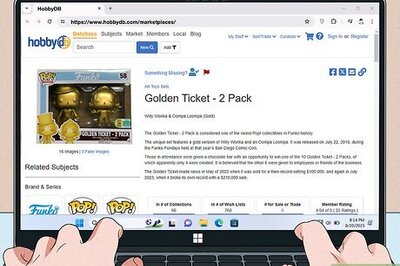
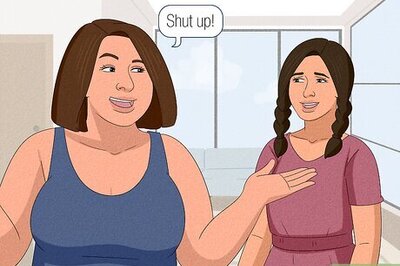



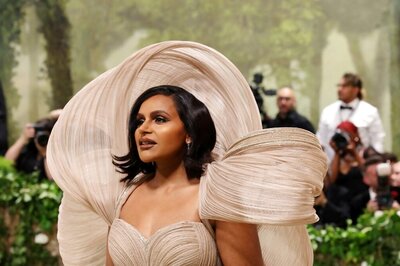
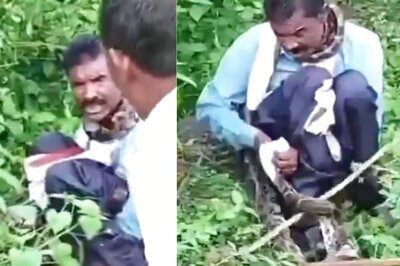
Comments
0 comment